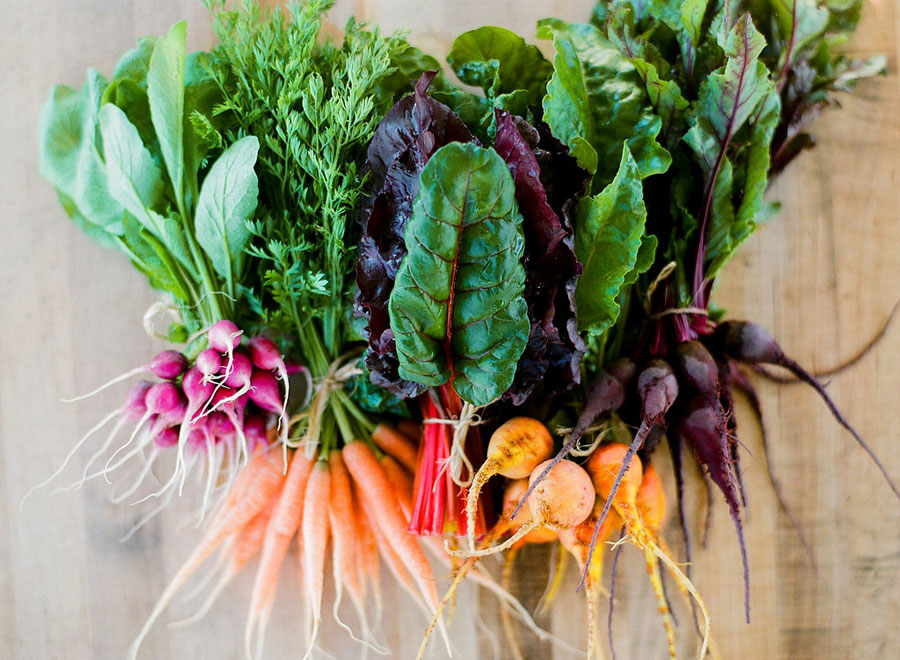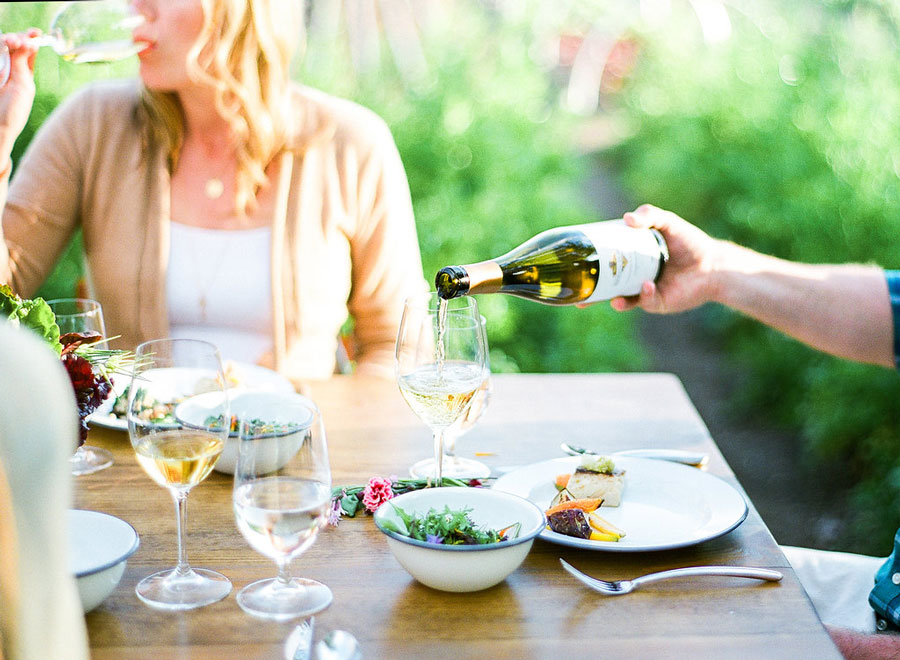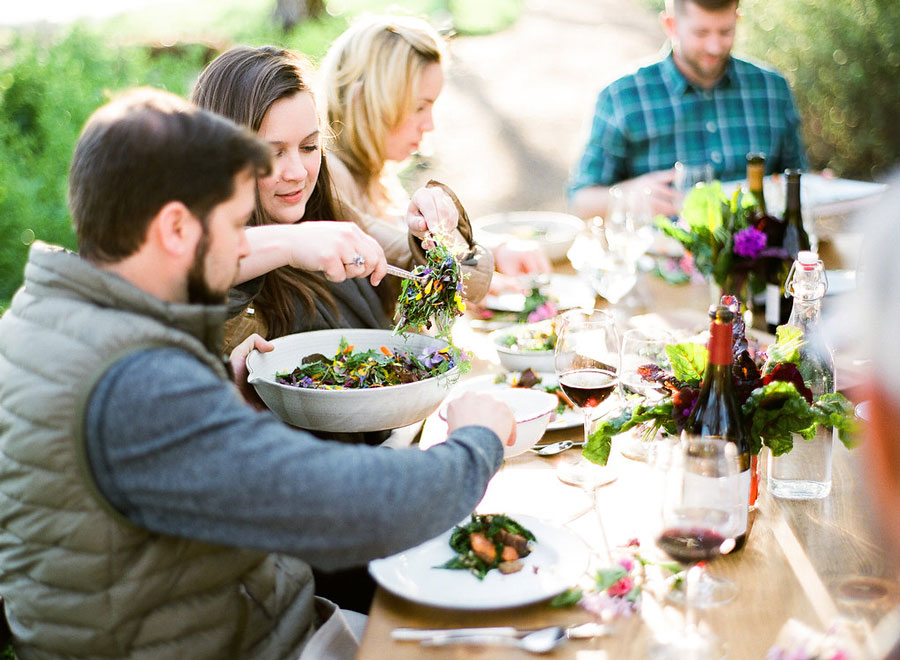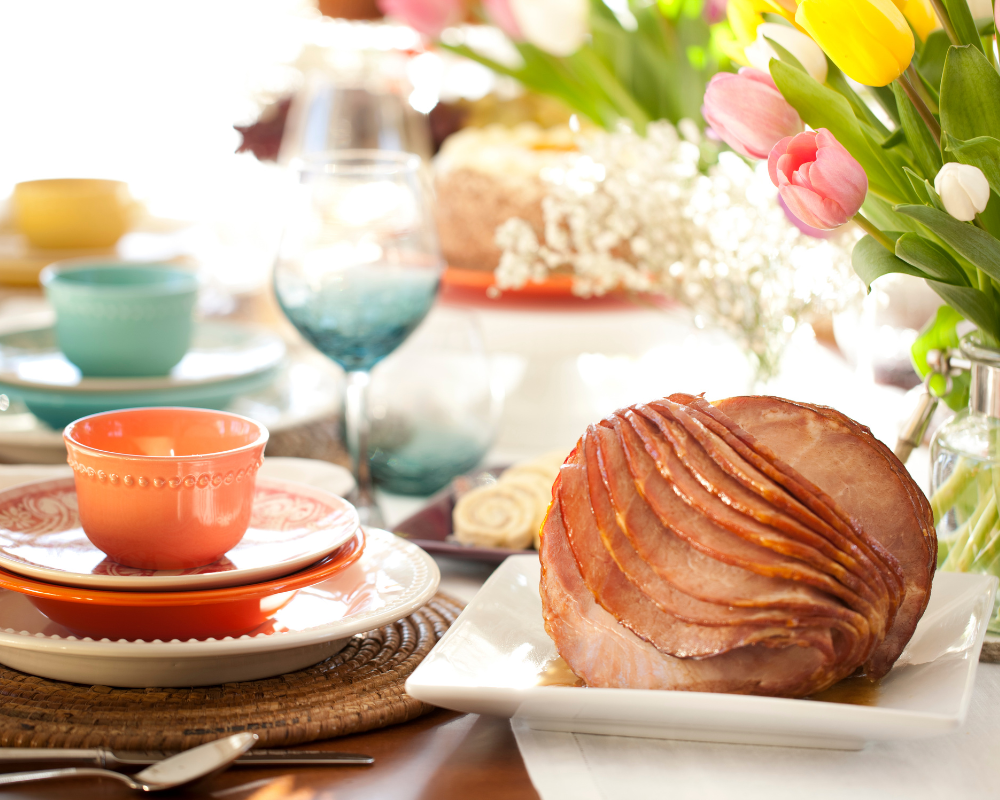Your Fantastic Farm-to-Fork Guide
I’ve always loved the saying, “Keep your friends close and your farmers closer.” It’s a mighty fine one to keep in mind as the trend toward authenticity and transparency pervades every fiber of our lives’ fabric. Farm-to-fork, field-to-fork, farm-to-table and all such like-minded phrases should guide our shopping and dining destinations.
At its heart, this grassroots, social movement is about knowing from where your food comes. That means knowing more than that your chicken breast was purchased at the local supermarket. It’s about lineage at its most noble and traceability at its most basic. The farm-to-fork mindset focuses on freshness, seasonality and (mostly) local community. While embodying such principles today, the movement stemmed from more sobering realities, including food safety, poor food flavor, diminishing nutritional value and dying family businesses – concerns that developed in the wake of World War II.
Sometimes supporting local farm-to-plate growers means spending a few more bucks. Sometimes it doesn’t. Like any ecosystem, living a farm-to-plate food life is all about balance. It should all work out in the wash.
Of course, there are black-and-white realities. No rain lately? Bad frost this spring? Got to the farmers’ market late? Your choice items may have sold out or may never have been available. Taking things a step further, farm-to-table is not only about where your food comes from but also the conditions under which it was cultivated. It is certainly not about hothouse tomatoes bought in December. (Seriously, please stop buying those. You know they’re mealy and have zero flavor. Wait for the good ones in the summer!)
How did the farm-to-table movement begin?
Most foodies will point to California’s legendary restaurateur Alice Waters. No doubt Alice spearheaded the movement through the early years and into the ensuing decades. Alice and visionary chef Jeremiah Tower (see Anthony Bourdain’s documentary, The Last Magnificent) started the local food, farm-to-fork drive with Jeremiah’s Northern California-focused dinners back in a time when “fancy” foods tended to be named by their European origins.
Towers also spawned another idea that promoted transparency: the open kitchen. Suddenly, everything about your food was – to use a pun – on the table: the sources were shared and the preparations were watched.
What is a good farm-to-table menu?
I prefer the restaurants and menus that specifically list their purveyors, be they farms, gardens, fisheries, creameries, coffee roasters, apiaries, wineries, distilleries or name another food or beverage business here. I’m “farm-to-fan!” Additionally, at any great farm-to-fork table, do engage your servers or the establishment owners. They can unfold a wealth of details as to why they use their chosen purveyors, and unlike most of your chain grocery stores, the decisive factors won’t be sheerly price based.
While restaurants are a great place to experience the farm-to-fork mentality first-hand, you can certainly explore it at home, too. If you’re lucky enough to have a local farmers’ market, you have an obvious place to start. Alternatively, you can usually visit local farms on your own. Pressed for time? Check for a Community Supported Agriculture (CSA) program, like Farm Fresh to You, in your area. You also can always ask your local grocer if there is a possibility of sourcing seasonal fruit, vegetables and other food products grown, raised or crafted near-by.

Shopping completed, are you finding that you have no idea what to do with some of your local, fresh produce? Feeling you should leave the cardoons, kohlrabi and lamb’s quarters (it’s a vegetable, not a cut of meat!) for the pros? Check out sites like Seasonal Food Guide for inspiration!
What wine pairings would you recommend?
Wine pairings for farm-to-fork and farm-to-table meals clearly favor local choices. If you live in wine country, you’re spoiled for choice! But even if you’re not near a vineyard, all 50 US states make wine, and they’ve done so for over a decade. Keep in mind that some producers buy grapes from other places (the cold northern states, for example, are very tough places to grow Vitis vinifera grapes like Cabernet Sauvignon and Chardonnay). At least the winemaking know-how will be local, even if the grapes aren’t. Don’t forget local breweries and distilleries to round out your beverage offerings.
Here are a few very, very basic guides. Please remember that food preparation can trump ingredient!
Winter root veggies: Kendall-Jackson Vintner’s Reserve Chardonnay has the touch of oak sweetness to pair well with anything baked in the oven with a butter or olive oil-coating, especially when it is a food of a lighter color (i.e. skip the beets here): parsnips, carrots, butternut squash and potatoes. (Please note that roasted fennel is better with Sauvignon Blanc.)
Game: There’s nothing like a pungent Zinfandel or a rambunctious blend to stand up to game! The Vintner’s Reserve Zinfandel is packed with berry punches and has a touch of earth and briar that lend well to the funk of local game. Alternatively, pick up a bottle of the Sonoma County Red Meritage, a blend of mostly Cabernet Sauvignon, Merlot, Cabernet Franc and Malbec whose smidge of Petit Verdot amps up this wine’s flavor and melds perfectly with the delightful brooding, sometimes sultry qualities of game.
Spring salads: Those first tender, green shoots of spring are feisty and vivid in flavor, which means they pair well with the lashing refreshment of Kendall-Jackson Vintner’s Reserve Sauvignon Blanc. Later season salads and those accompanied by the delicate sweetness of fruits – whether pear, persimmon or pomegranate – mix seamlessly with Kendall-Jackson Pinot Gris Reserve.
Summer barbecues: There’s nothing like a barbecue to solicit a bevy of dark red wines. And, while summer temperatures tend to defy heavy foods and higher alcohol wines, there’s almost nothing as delightful as a pair of short ribs and Kendall-Jackson Cabernet Sauvignon Stature. As they say, go big or go home!
Refreshing desserts: None of us these days want to be laden down by calorie-heavy desserts. An uplifting, lower-alcohol Muscat Canelli accompanied by a local fruit salad or an angel cake-topped with fresh fruits is about as sinless, delightful and simple as it gets.
What are some tips for putting on a farm-to-table gathering?
By now you may be thinking of concocting your own farm-to-table experience chez toi – yes? Fab! In addition to the above ideas, consider local florists and even tableware fashionistas. You can also filter local water or look for a spring water source near you to really seam in the farm to fork idea from A to Z.

Once all of your ideas to feed folks are gelled, consider your meal’s service. The essence of farm-to-table is community, so how can you extend that right through your dining experience? How about a self-serve bar? Family-style food service? Also, though it is less efficient (think lots of dish gloves, hand washing and hand cream), it is utterly charming to use old service and tableware if you don’t have anything local. This inserts the idea of reuse/relive into your theme of local vibrancy. This post from The Everygirl suggests fall color schemes for a farm-to-table dinner, and this post offers options for decorating with those herbs you don’t polish off or vegetables you don’t dare dissect (fall gourds and squashes come to mind in my kitchen.)

Another possibility for full-throttle farm-to-table is via entertainment. You could ask a local band to play or a school choir to sing at your shindig. And of course, make good use of options for local rides home for everyone.
Kendall-Jackson’s farm-to-table experience
If you aren’t up to hosting your own farm-to-fork experience, enjoy a stunning Farm-to-Table dinner hosted throughout the fair weather seasons at the beautiful Kendall-Jackson Wine Estate & Gardens located in Sonoma County, just north of San Francisco, California. (The mid-fall Harvest Celebration is a primo event!) While the culinary staff, gardening grounds and hospitality staff at Kendall-Jackson are urbane and world-class, the Jackson family members consider themselves farmers first. And, what you eat – as well as drink - at their table is homegrown on their four-acre garden or brought in from local purveyors.
However you do it, be a food activist this year! Farm-to-fork tables and field-to-fork menus are the best way to support local food culture. Keep small family farms alive! Encourage heirloom fruits and veggies! Shun foods grown with hormones, pesticides and chemicals! The faster your farm-to-plate food is delivered, the more epic its flavor will be!
Photography by Constance Higley
Christy Canterbury is a Master of Wine, journalist, speaker and judge based in New York City. In 2014, she was short-listed for the Roederer Online Wine Communicator of the Year Award. Her work has been published in Decanter, Wine Enthusiast, Edible Green Mountains, Wine Searcher, Food Arts, Snooth, Beverage Media, TimAtkin.com, Civiltà del Bere, Wine Business Monthly, TASTED, Selectus Wines and in other outlets.



